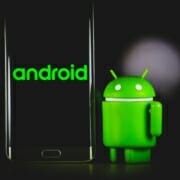Enhancing User Acquisition and Retention Strategies
There’s no doubt that a central tactic for driving mobile app success is achieving user acquisition, engagement and retention. However, without an effective acquisition and retention strategy that keeps active users around, higher rates of downloads won’t yield any lifetime business value.
Mobile app engagement and retention are two critical metrics that give a clear and accurate insight into the success of any mobile app. Lower app retention and engagement rates are a sure-fire recipe for disaster.
App developers, brands, and enterprises must know that achieving sufficient app engagement and retention is difficult. For instance, Statista reports that only 32% of mobile users will return to a mobile app ten times or more after downloading. What’s even surprising is that a whopping 25% of users will abandon an app after one-time use.
Enhancing user acquisition, engagement and retention leads to an active user group that drives leads and sustains growth. The following tips for increasing user acquisition and retention will help you reduce your app churn rate and help your enterprise see the desired ROI and the results it anticipates from your app investment.
Let’s delve right in!
- Efficient Onboarding
While it may seem simple to welcome users to your app, not all apps kick-start an efficient onboarding process. Therefore, it’s advisable to make your onboarding process as simple and as efficient as possible to initiate user acquisition and retention. The more difficult it is to use an app, the more likely new and existing users will abandon it.
Some of the ways to simplify the user onboarding process include:
- Cut down the number of steps required to set up a new account — and capture multiple registration platforms (Facebook, Google, Twitter, and others)
- Educate users throughout the onboarding process to launch the app’s functionality, but don’t overload users instantly.
- Teach and educate through actions and pointers to show the main gestures in the app’s functionality.
An efficient onboarding process equals faster and easier user acquisition and engagement.
- Track Data Early Enough
To accurately evaluate and measure data and improvements, you need to start tracking your app’s data early enough. Early data collection and tracking will give you what you need to evaluate performance. It will also help you fast-track which features and strategies affect engagement and retention.
- Push Notifications Right Away!
Users who experience personalized brand interaction are reportedly more likely to return to a mobile app for ten or more sessions. To put it simply, if you walk into a retail outlet and you aren’t acknowledged, you’d most likely feel disgruntled. Consider app experience the same way.
An app interaction can be as simple as sending a push notification, thus providing valuable information as users leverage the app. Successful mobile applications use this approach to shape the customer’s journey. They’re strategic and thoughtful in how they access and engage new users. For instance, giving relevant retail deals based on user patterns and geo-location are clever approaches to promoting app retention.
- Offer an Incentive Program
If your business model allows you to offer loyalty or a reward program, it’s vital to capitalize on this opportunity. Not only do reward and loyalty programs incentivize users towards the app, but they also make users feel recognized and part of the brand.
Realize that apps that utilize in-app purchases as a monetization approach, especially the quick router set-up (QRS) applications, offer time-sensitive discounts. However, freemium mobile apps can be incentivized with usage-based discounts instead of monetary benefits.
- In-app Messages
The more disposed your app experience is with your users’ needs and preferences, the more likely users will continue using the product. Brands utilizing in-app messaging to communicate with users will see a retention rate within a month.
In-app notifications denote notifications that don’t demand immediate action or response but are altogether crucial in the customer’s engagement journey. These messages can capture notifications or warnings about version upgrades, app issues, or payment failures. Therefore, remember that not every notification you see is relevant to every user. Fragmenting your audience ensures the information you convey is relevant to their needs and expectations.
Contact NS804 to discover how your app can respond to new user acquisition, engagement and retention needs.

 https://unsplash.com/photos/2FPjlAyMQTA
https://unsplash.com/photos/2FPjlAyMQTA










Leave a Reply
Want to join the discussion?Feel free to contribute!